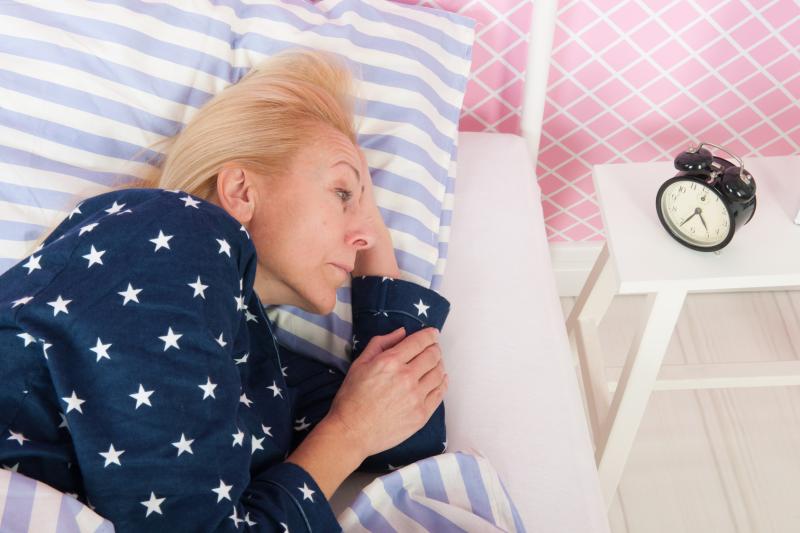
Postmenopausal women are at greater odds of experiencing sleep-onset insomnia, as well as of screening positive for obstructive sleep apnoea (OSA), a study has found.
Researchers looked at a cohort of 6,179 women aged between 45–60 years from the Canadian Longitudinal Study of Aging. All participants completed assessments for overall sleep satisfaction, hours of daily sleep, sleep-onset insomnia, sleep-maintenance insomnia, daytime somnolence, rapid eye movement sleep behaviour disorder (RBD), restless leg syndrome (RLS) and OSA.
Majority of the population (60.1 percent; mean age, 55.7 years) were postmenopausal, while the remaining 39.9 percent were pre/perimenopausal (mean age, 49.80 years).
Multivariate regression analysis showed that compared with pre/perimenopausal women, those who were postmenopausal were more likely to report needing ≥30 minutes to fall asleep (20.4 percent vs 15.5 percent; adjusted odds ratio [AOR], 1.24, 95 percent confidence interval [CI], 1.00–1.53), to meet criteria for possible sleep-onset insomnia disorder (10.8 percent vs 7.3 percent; AOR, 1.51, 95 percent CI, 1.07–2.12), and to have OSA (14.6 percent vs 10.4 percent; AOR, 1.48, 95 percent CI, 1.14–1.92).
The postmenopausal and pre/perimenopausal groups did not differ in terms of the following outcomes: sleep dissatisfaction (32.4 percent vs 29 percent), daytime somnolence disorder (1.6 percent vs 1.3 percent), sleep-maintenance insomnia disorder (17 percent vs 14.5 percent), RLS (23.5 percent vs 20.9 percent) or RBD (3.9 percent vs 4.0 percent).
According to the researchers, more studies should be conducted to identify the mechanisms underlying the association between menopause, sleep-onset insomnia and OSA, as well as explore potential treatments.